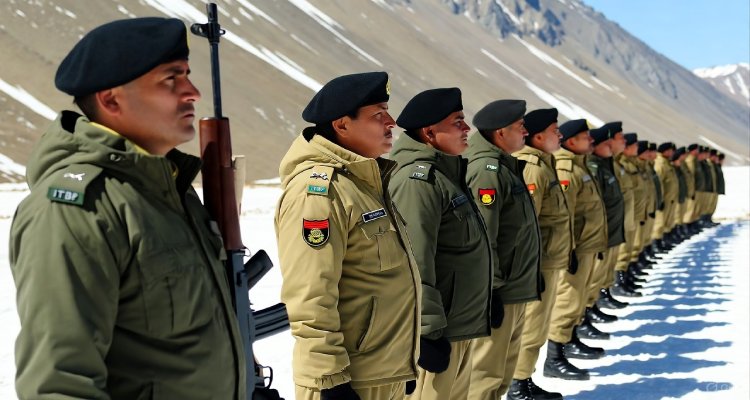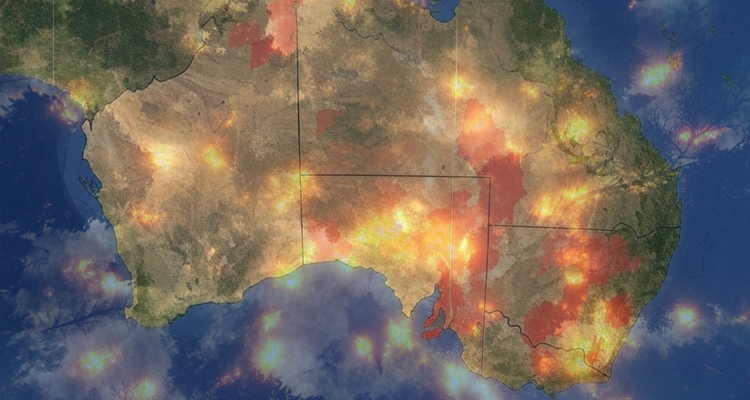Australia’s Southeast Faces Scorching Heatwave, Fire Risks Surge
A dangerous heatwave grips southeast Australia, pushing temperatures past 105°F and heightening fire risks across multiple states.
Record-Breaking Heatwave Grips Southeast Australia, Escalating Bushfire Threats
Southeast Australia is reeling under a sweltering heatwave, with authorities issuing emergency fire bans across Victoria to counter a heightened risk of bushfires. Temperatures soared past 105°F (41°C) on Monday, significantly exceeding seasonal averages and reviving fears of another catastrophic fire season reminiscent of the devastating 2019-2020 “Black Summer.”
The Australian Bureau of Meteorology (BoM) cautioned that Melbourne, the capital of Victoria, was experiencing temperatures more than 14 degrees Celsius above its typical January maximum. With intense heat fanning across the state, officials placed five regions under an extreme fire danger rating—the second-highest alert level.
Firefighters on High Alert as Dry Winds Fuel Risks
Senior meteorologist Dean Narramore underscored the urgency of the situation, telling the Australian Broadcasting Corporation (ABC) that the combination of soaring temperatures and strong winds could lead to “significant fire outbreaks.” The volatile conditions are expected to persist until a much-needed cool change arrives later in the week.
The warnings extend beyond Victoria. Neighboring states, including New South Wales (NSW), South Australia, Queensland, Western Australia, and the Northern Territory, are also under heatwave advisories, according to BoM’s latest reports. NSW, Australia’s most populous state, is bracing for worsening conditions, with Narramore warning of “low to severe heatwave conditions” intensifying by Tuesday.
Echoes of the 2019-2020 Fire Disaster
The escalating heat brings back grim memories of the Black Summer bushfires that devastated vast swathes of Australia just four years ago. The catastrophic blazes scorched over 24 million hectares—an area larger than the entire country of Turkey—resulting in 33 human fatalities and the loss of an estimated three billion animals. The scars of that season remain fresh, and authorities are leaving no stone unturned in their fire prevention strategies.
State emergency services are urging residents to remain vigilant, follow fire safety protocols, and stay informed through official weather and emergency channels. Local fire departments are ramping up their preparedness, deploying additional resources to high-risk areas, and reinforcing controlled burn efforts to mitigate fuel loads.
Climate Change and the Increasing Frequency of Extreme Weather
Climate experts attribute the intensifying heatwaves and bushfire risks to long-term climate change trends. Rising global temperatures have led to prolonged dry spells, reducing moisture levels in forests and grasslands—conditions ripe for fast-spreading wildfires. Australia has recorded a steady increase in extreme weather events over the past two decades, with heatwaves becoming more frequent and prolonged.
A recent report by the Climate Council of Australia highlighted that the country is warming at an accelerated rate compared to the global average. Scientists warn that without immediate climate action, extreme weather patterns, including devastating fires and prolonged heatwaves, will become the new norm.
Government Response and Emergency Measures
In response to the current crisis, authorities in Victoria and NSW have implemented stringent fire bans, restricting outdoor activities that could ignite new fires. Residents have been advised to avoid using open flames, including barbecues and campfires, and to clear any dry vegetation around their properties. Fire services are conducting aerial surveillance and ground patrols to detect and extinguish potential flare-ups before they escalate.
Meanwhile, public health officials are also warning of the dangers posed by extreme heat, particularly for vulnerable populations such as older, young children, and individuals with pre-existing health conditions. Heat-related illnesses, including dehydration and heatstroke, pose serious risks, and residents are being urged to stay hydrated and limit outdoor exposure during peak temperatures.
Looking Ahead: What’s Next for Australia’s Fire Season?
With summer in full swing, the current heatwave may be an early indicator of what lies ahead for Australia’s fire season. Meteorologists predict that while cooler temperatures are expected to offer temporary relief later this week, the broader trend of rising heat and dry conditions will continue through the coming months.
Authorities are urging Australians to remain prepared, follow emergency alerts, and prioritize safety measures as the country navigates another potentially volatile summer. The lessons learned from previous disasters highlight the importance of proactive prevention, rapid response, and climate action to mitigate the devastating impacts of extreme weather events.
Australia’s southeast is experiencing one of the most intense heatwaves in recent years, with soaring temperatures amplifying the risk of bushfires. Authorities are on high alert, implementing emergency measures to protect lives, wildlife, and property. As climate change continues to fuel extreme weather patterns, urgent action is needed to mitigate future risks and build resilience against natural disasters. The coming weeks will be crucial in determining how well the nation can prevent another catastrophic fire season.
Source: (Reuters)
(Disclaimer: This article is based on publicly available information and weather forecasts. Conditions may change rapidly, and readers are advised to refer to official sources such as the Australian Bureau of Meteorology and state emergency services for the latest updates.)
Also Read: Trump’s FEMA Review Sparks Debate Amid Disaster Recovery Struggles











